IEEE Std 802.1ah-2008 Front Cover
Abstract/Keyword
Introduction
Notice to users
Laws and regulations
Copyrights
Updating of IEEE documents
Errata
Interpretations
Patents
Participants
CONTENTS
Figures
Tables
Important Notice
1. Overview
1.1 Scope
2. Normative references
3. Definitions
4. Abbreviations
5. Conformance
5.2 Conformant components and equipment
5.3 Protocol Implementation Conformance Statement (PICS)
5.7 I-component conformance
5.7.1 I-component options
5.8 B-component conformance
5.8.1 B-component options
5.11 Backbone Edge Bridge conformance
6. Support of the MAC Service in VLANs
6.1.4 Service access points, interface stacks, and ports
6.6 Internal Sublayer Service
6.6.1 Service primitives and parameters
6.8 Enhanced Internal Sublayer Service
6.8.1 Service primitives
6.9 Support of the EISS
6.9.1 Data indications
6.9.2 Data requests
6.10 Support of the EISS by Provider Instance Ports
6.10.1 Data indications
6.10.2 Data requests
6.10.3 Priority Code Point encoding
6.11 Support of the EISS by Customer Backbone Ports
6.11.1 Data indications
6.11.2 Data requests
6.11.3 Priority Code Point decoding
6.11.4 Regenerating priority
6.18 Backbone Service Instance Multiplex Entity
6.18.1 Demultiplexing direction
6.18.2 Multiplexing direction
6.18.3 Priority Code Point encoding
6.18.4 Status parameters
7. Principles of network operation
7.4 Locating end stations
8. Principles of bridge operation
8.8 The Filtering Database
8.8.3 Dynamic Filtering Entries
8.8.8 Querying the Filtering Database
8.8.11 Connection_Identifier
9. Tagged frame format
9.5 Tag Protocol Identification
9.8 Backbone Service Instance Tag Control Information
12. Bridge management
12.2 Managed objectsVLAN-aware bridge objects
12.3 Data types
12.7 Filtering Database
12.7.7 General Filtering Database operations
12.8 Bridge Protocol Entity
12.14 CFM entities
12.15 Backbone Core Bridge management
12.16 Backbone Edge Bridge management
12.16.1 BEB configuration managed object
12.16.2 BEB/PB/VLAN Bridge Port configuration managed object
12.16.3 VIP configuration managed object
12.16.4 PIP configuration managed object
12.16.5 CBP Configuration managed object
13. The Multiple Spanning Tree Protocol (MSTP)
13.12 Port Role assignments
13.19 Multiple Spanning Tree state machines
13.21 State machine timers
13.21.1 pseudoInfoHelloWhen
13.25 State machine conditions and parameters
13.25.18 enableBPDUrx
13.25.19 enableBPDUtx
13.25.20 pseudoRootId
13.25.21 isL2gp
13.26 State machine procedures
13.26.6 checkBPDUConsistency()
13.26.7 preparePseudoInfo()
13.27 The Port Timers state machine
13.28 Port Receive state machine
13.31 Port Transmit state machine
13.32 Port Information state machine
13.37 Port Receive Pseudo Information state machine
13.40 Virtual Instance Port Spanning Tree operation
18. Principles of Connectivity Fault Management operation
19. CFM Entity operation
19.4 Maintenance Point addressing
20. Connectivity Fault Management protocols
20.26.1 ProcessLBM()
20.42.1 ProcessLTM()
25. Support of the MAC Service by Provider Backbone Bridged Networks
25.1 Service transparency
25.2 Customer service interface
25.3 Port-based service interface
25.4 S-tagged service interface
25.5 I-tagged service interface
25.6 Service instance segregation
25.7 Service instance selection and identification
25.8 Service priority and drop eligibility selection
25.9 Service access protection
25.9.1 Class II redundant LANs access protection
25.9.2 Class III simple redundant LANs and nodes access protection
26. Principles of Provider Backbone Bridged Network operation
26.1 Provider Backbone Bridged Network overview
26.2 Provider Backbone Bridged Network example
26.3 Backbone VLAN connectivity
26.4 Backbone addressing
26.4.1 Learning individual backbone addresses at a PIP
26.4.2 Translating backbone destination addresses at a CBP
26.4.3 Backbone addressing considerations for CFM Maintenance Points
26.5 Detection of connectivity loops through attached networks
26.6 Scaling of Provider Backbone Bridges
26.6.1 Hierarchal PBBNs
26.6.2 Peer PBBNs
26.7 Network Management
26.8 Connectivity Fault Management in Provider Backbone Bridges
26.8.1 CFM over Port-based and S-tagged Service Interfaces
26.8.2 Connectivity Fault Management over I-tagged Service Interfaces
26.8.3 Connectivity Fault Management over hierarchal E-NNI
26.8.4 Connectivity Fault Management over peer E-NNI
Annex A (normative) PICS proforma
Annex B (informative) Shared and independent VLAN learning


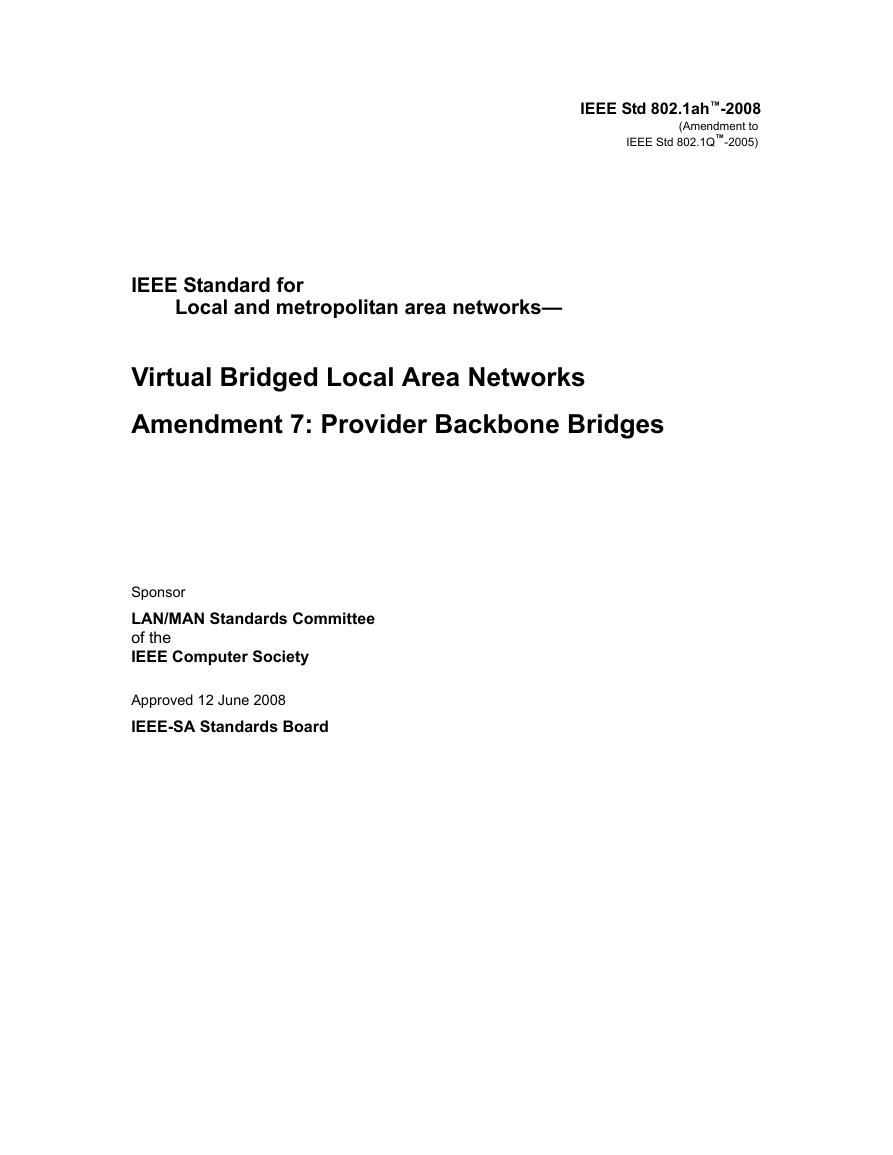
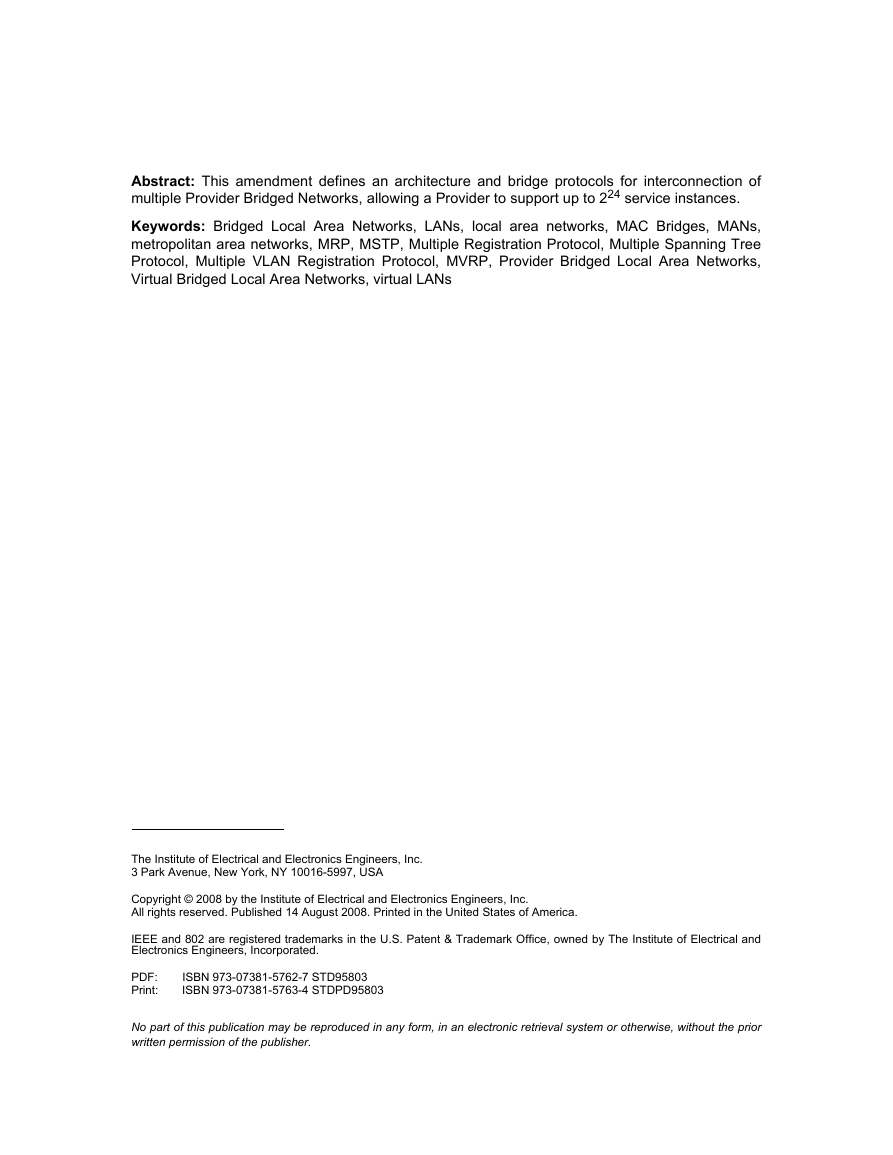
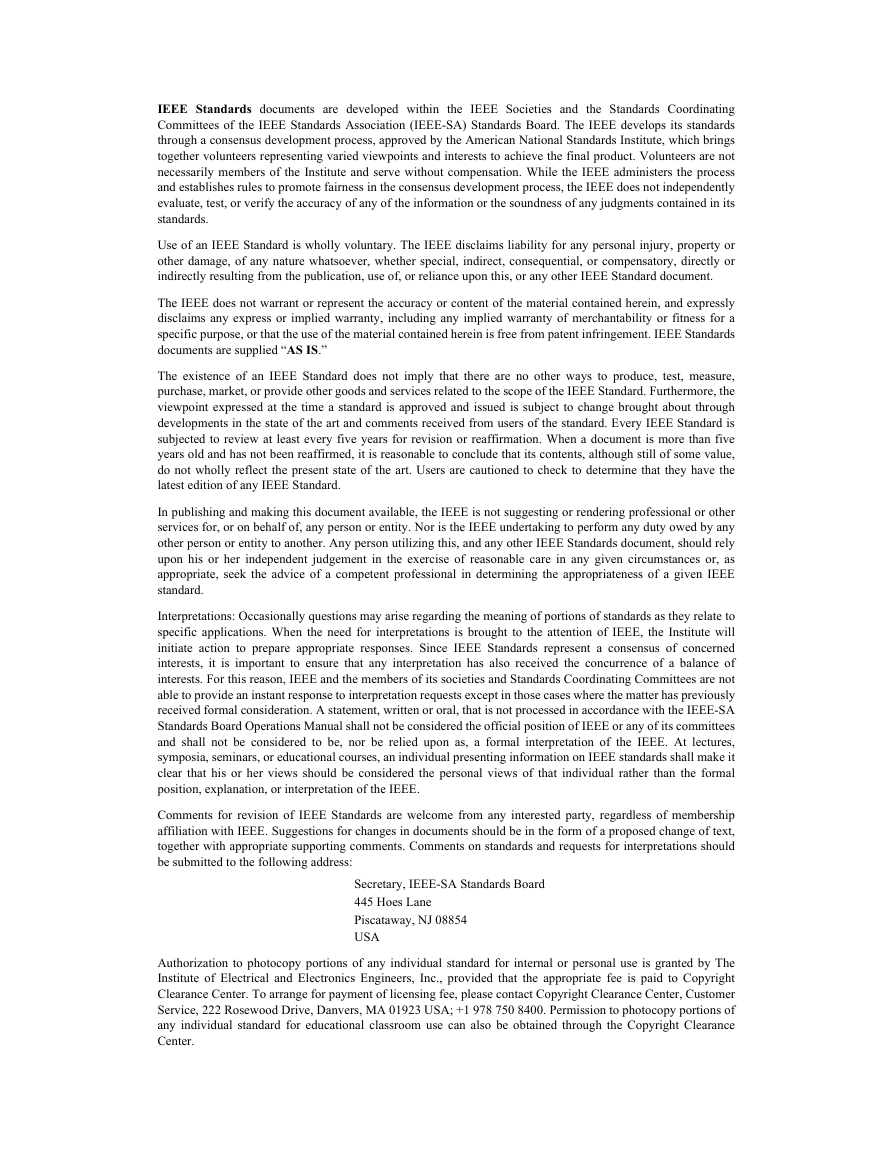
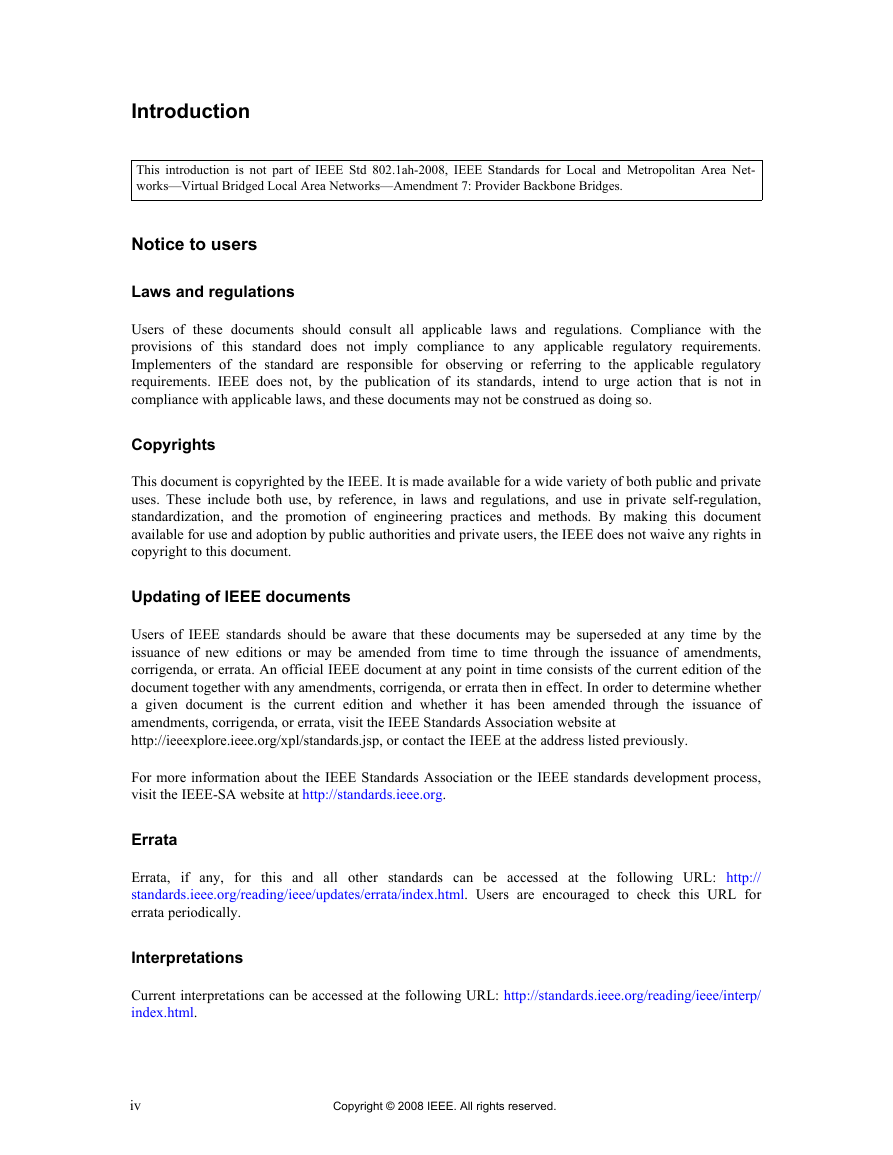
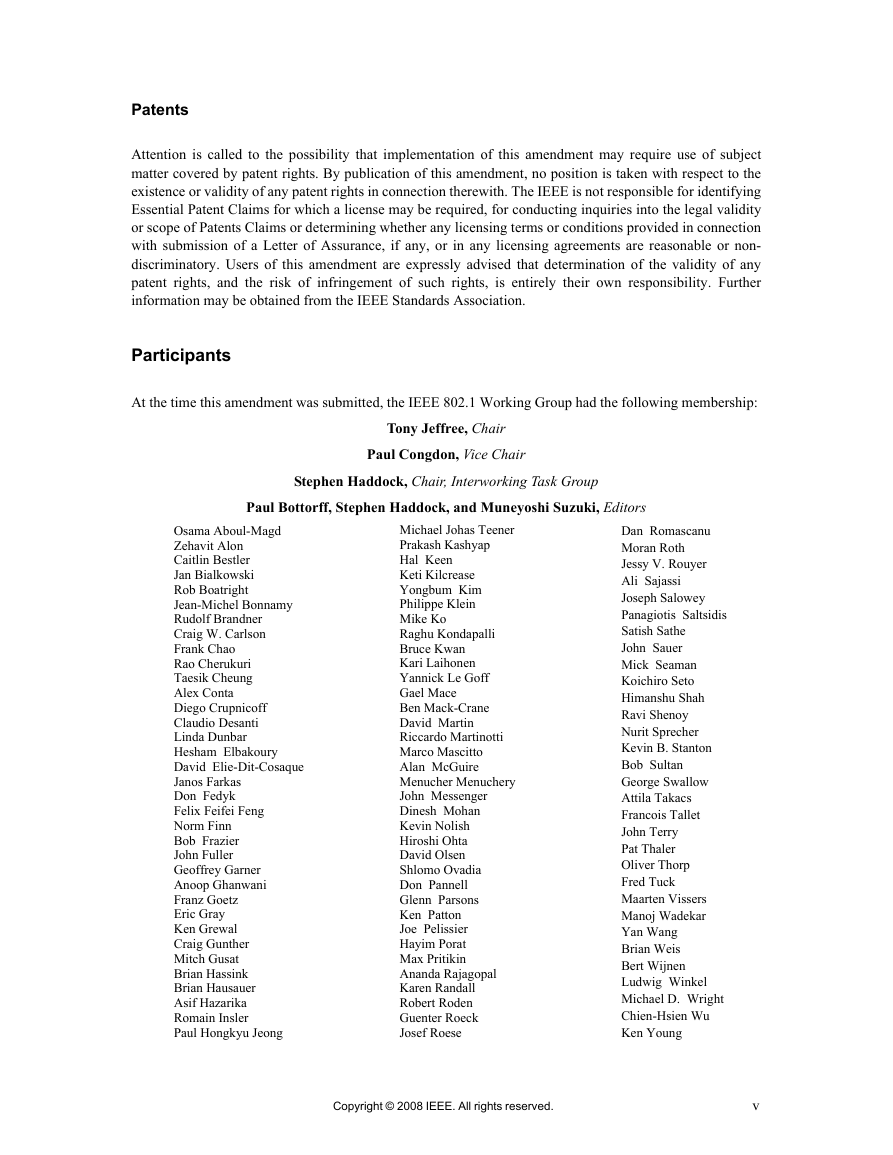
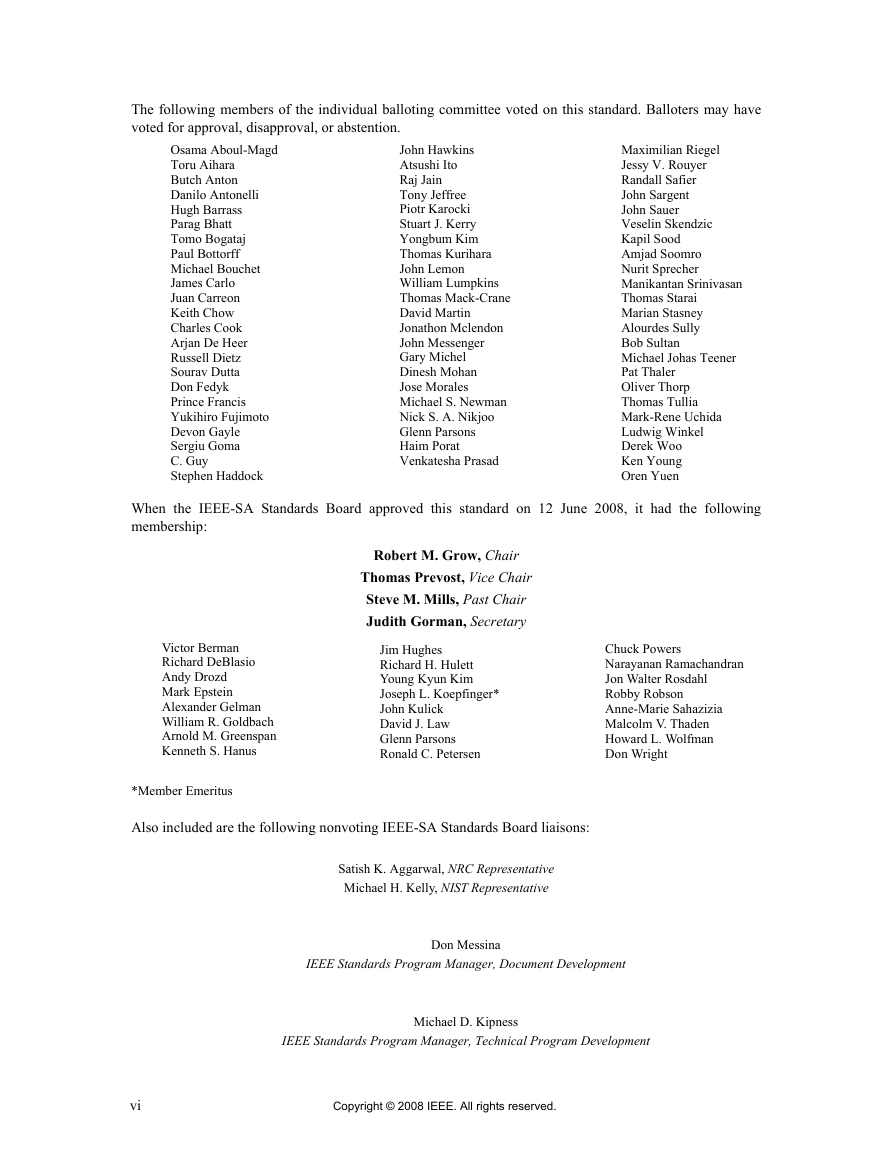








 2023年江西萍乡中考道德与法治真题及答案.doc
2023年江西萍乡中考道德与法治真题及答案.doc 2012年重庆南川中考生物真题及答案.doc
2012年重庆南川中考生物真题及答案.doc 2013年江西师范大学地理学综合及文艺理论基础考研真题.doc
2013年江西师范大学地理学综合及文艺理论基础考研真题.doc 2020年四川甘孜小升初语文真题及答案I卷.doc
2020年四川甘孜小升初语文真题及答案I卷.doc 2020年注册岩土工程师专业基础考试真题及答案.doc
2020年注册岩土工程师专业基础考试真题及答案.doc 2023-2024学年福建省厦门市九年级上学期数学月考试题及答案.doc
2023-2024学年福建省厦门市九年级上学期数学月考试题及答案.doc 2021-2022学年辽宁省沈阳市大东区九年级上学期语文期末试题及答案.doc
2021-2022学年辽宁省沈阳市大东区九年级上学期语文期末试题及答案.doc 2022-2023学年北京东城区初三第一学期物理期末试卷及答案.doc
2022-2023学年北京东城区初三第一学期物理期末试卷及答案.doc 2018上半年江西教师资格初中地理学科知识与教学能力真题及答案.doc
2018上半年江西教师资格初中地理学科知识与教学能力真题及答案.doc 2012年河北国家公务员申论考试真题及答案-省级.doc
2012年河北国家公务员申论考试真题及答案-省级.doc 2020-2021学年江苏省扬州市江都区邵樊片九年级上学期数学第一次质量检测试题及答案.doc
2020-2021学年江苏省扬州市江都区邵樊片九年级上学期数学第一次质量检测试题及答案.doc 2022下半年黑龙江教师资格证中学综合素质真题及答案.doc
2022下半年黑龙江教师资格证中学综合素质真题及答案.doc